BART’s new train cars feature many new improvements. The cars are:
- Quieter: micro-plug doors help seal out noise
- Cooler: cooling systems distribute air directly from the ceilings, making it more comfortable for standees on hot days
- Comfortable: padded seats have lumbar support – and are covered with wipeable fabric for ease of cleaning
- Easy to use: routes are color coded like the BART system map, and next stop information is readily available via automated announcements and digital screens.
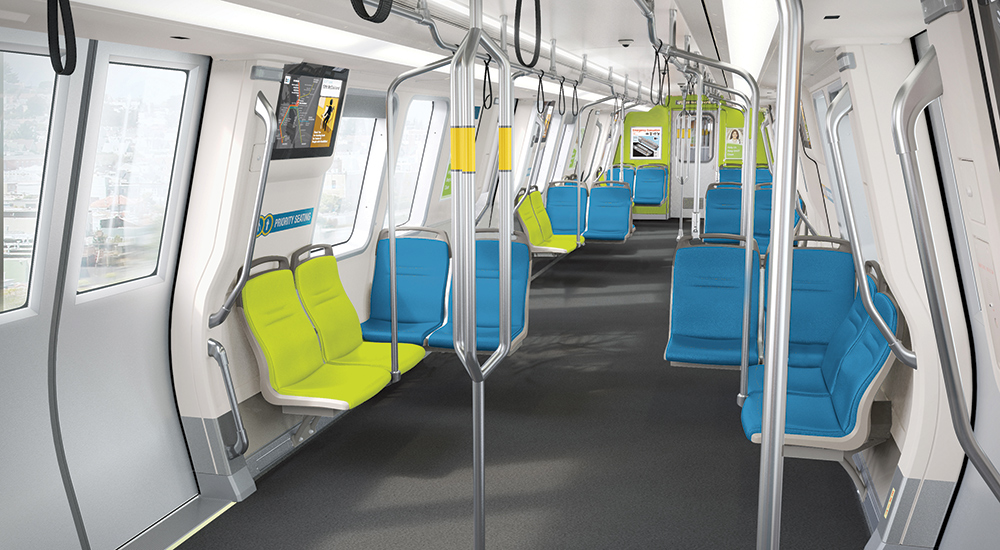
Train Interior Layout
Based on customer feedback, the train interior layout is designed to maximize seating, openness, and comfort within the available space.
The new train design provides more handholds for shorter and mobility-impaired individuals. For taller customers, the design features a higher ceiling over the middle aisles, about four inches higher than the current BART train cars. The ceiling is accented with indirect light.
The new train car design includes two types of seating areas to meet the diverse needs of BART customers. The train cars have conventional seating at the ends that customers settling in for a longer trip may want to choose, while open seating areas near the doors may be preferred by riders traveling in groups. Riders with luggage, strollers or other personal items, as well as customers who want a little more legroom may also prefer the open seating areas.
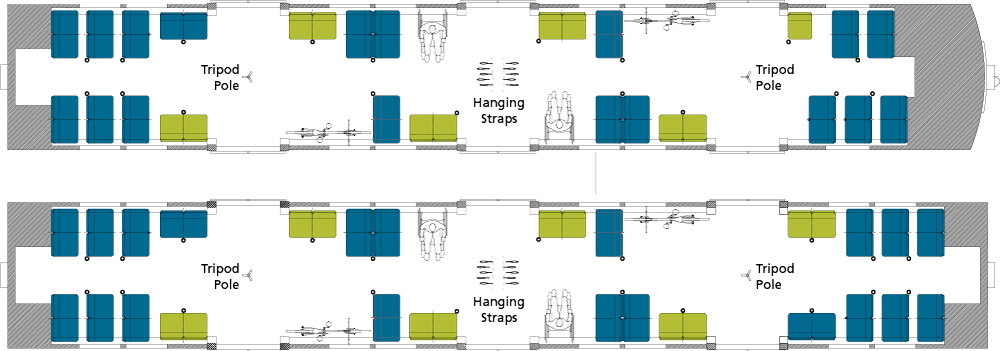
The upper image is the cab car and the lower image is the non-cab car.
Based on feedback from disability advocates, the floor plan was modified in February 2015 to enable passengers with more than one wheelchair user in their group to sit in the same area when they ride BART. As a result, both wheelchair areas are now located at the center door of the train car, and all floor-to-ceiling poles have been removed in this area to maximize accessible paths. The end doors have tripod poles for semi-ambulatory people with disabilities, senior citizens, and others who need extra stability as the train accelerates and decelerates. This modified plan was endorsed by the BART Accessibility Talk Force as well as other disability groups.
Space for Bikes on the Fleet of the Future
Based on surveys of more than 3,000 BART riders, a decision has been made to include two bike areas on each new Fleet of the Future train car, the same as on BART’s older legacy cars.

While the bike areas result in fewer seats, having an open bike area at each end of the car:
- is consistent with the legacy cars, which have two bike areas;
- will create a predictable boarding location for bicyclists at each end of the car;
- will accommodate more cyclists; and
- will accommodate more standing passengers, luggage, and strollers when not used by bikes.
With this change, the current order of 775 Fleet of the Future cars will have an average of 50 seats, compared to legacy cars which average 54.6 seats.
Fleet of the Future cars use thinner seat backs to help maximize seat count, and are outfitted with as many seats as can fit within the available space. Available space for seating, however, is limited by new buffer zones at the ends of each car required for crash safety, and a third door on each car to make it faster and easier to get on and off the train.
Each bike area has a horizontal leaning bar and strap that bicyclists can use to stabilize their bikes. BART is selecting this leaning bar option instead of bike racks based on bicyclist preference in the survey.
Note: Doors on the new train cars are marked with exterior decals to show which doors have designated wheelchair zones and which doors have bike parking.
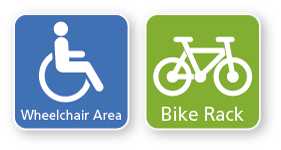
Seats
During initial customer feedback sessions, riders indicated cleanliness is a top priority. So, BART replaced seat covers on the existing train cars with a non-porous, wipeable seat material that is easy to keep clean. This type of seat material has received a positive response among riders, so it will continue to be used in the new train cars.
Read more about the BART’s new vinyl seats.
Seats on BART's new train cars are almost 50% lighter than the current seats, which will save energy over the life of the vehicle. The new seats are fully modular, allowing for seat reconfiguration which will enable the vehicle to evolve with future rider needs. The seats use longer lasting silicone cushions that hold their shape longer and improve life cycle sustainability. Also, the seats provide one-inch more legroom than the seats on the old trains.

Feedback from over 2,000 customers in 2011 helped BART determine optimal seat dimensions for the new train cars. BART surveyed a random sample of BART riders to learn what dimensions were acceptable:
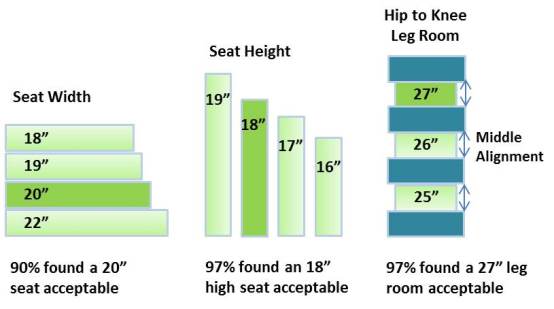
Based on feedback from the seat labs, the seats in the new train cars have these dimensions:

Having the seats mounted higher off the floor makes it easier for customers to stand up from a seated position. Also, it adds extra room underneath the seats to fit carry-on sized luggage. Read more about the seat lab results.
Later in the design process, over 2,500 customers tested out prototype seats in October and November 2013. The seats with a medium density seat bottom foam won out over high- and low-density options. Overall customer acceptance of the prototype seats was fairly high, and the seats got especially good ratings for lumbar support.
Prototype Seat Ratings - Medium Density Bottom Foam:

Passenger Information Systems
The new train cars include 6 interior digital screens (located next to side doors) that display a dynamic system or route map, the next stop, courtesy reminders and safety information. BART is excited about using these screens to improve customers' BART experience! View a sample loop below that illustrates what these screens could eventually show. The system map on the left tells you where you are, while the right-hand side of the screen shows the next stop and other information.
The new train car interior design includes LED screens on the ends of the cars that display next stop information. Additional digital screens on the exterior of the cars display route color, the train’s destination, and possibly other information in the future.

In addition to the digital screens, many hearing-impaired riders may benefit from an induction loop system that transmits information directly to receptive hearing aids and cochlear implants.
Sight impaired passengers will benefit from automated audio announcements and a better-quality PA system with interior and exterior speakers.
Read more about accessibility features.
Doors
In anticipation of continued ridership growth over the next 30 years, the new train cars have three doors on each side to make it faster and easier for passengers to get on and off trains. Two of the doors are located at the ends of the cars—in the same place as today. A third door is located in the middle of the car.
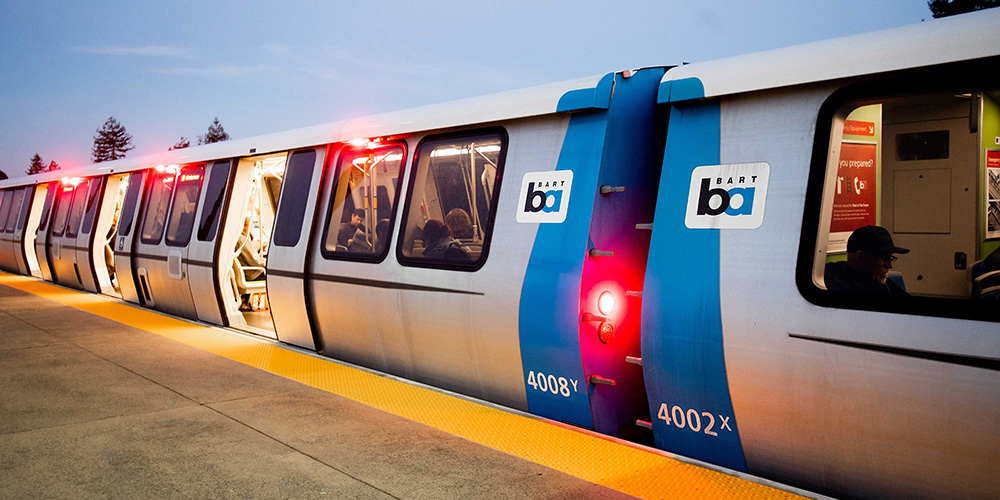
The doors on the new trains use an entirely different technology than that used by the current trains. Vintage BART trains have pocket doors that slide into the wall when they open. These doors contribute to a noisy ride on BART because they do not adequately block noise from outside the train and they can rattle as the train travels through tunnels.
The new doors utilize micro-plug door technology. This means they slide on a track outside the train, similar to a mini-van door. As they slide closed, they pull in ¾ of an inch to seal tightly around the door frame. This “plug” dampens the amount of noise that reaches the inside of the train, as well as providing better thermal insulation, making the cars more comfortable on very hot or cold days.